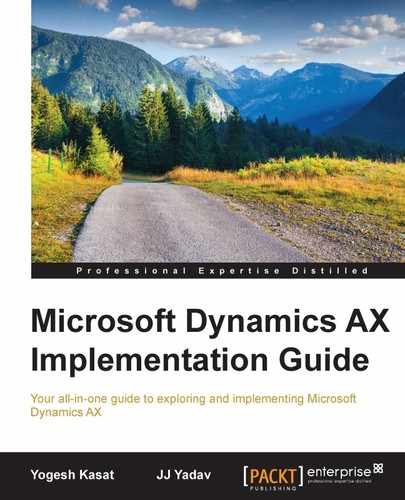The Microsoft Dynamics AX product has evolved into a formidable ERP platform that is suitable for large-scale and enterprise customers. Although it comes with richer functionality and better scalability, it also has additional complexity. This has translated into more challenging implementation cycles as many projects are now multicompany and multinational affairs. The keys for a successful Dynamics AX implementation in this type of complex environment revolve around strong project management and a clear understanding of what needs to be done in each phase of the project. Recent releases of the AX platform put many new tools in your toolbox; you need to understand the tools and select the corresponding techniques to ensure that your Dynamics AX implementation project is effective and successful.
Microsoft Dynamics AX Implementation Guide draws on real-life experiences from large Dynamics AX implementation projects. This book will guide you through the entire lifecycle of a Dynamics AX implementation, helping you avoid common pitfalls while increasing your efficiency and effectiveness at every stage of the project. This book focuses on providing you with straightforward techniques with step-by-step instructions on how to follow them; this, along with real-life examples from the field, will further increase your ability to execute the projects well. Upon reading this book, you'll be in the position to implement Dynamics AX right the first time.
ERP implementations are complex by nature because of their many moving parts, and leaders are expected to know of all the aspects. This book provides a summary of the various facets of running a successful Dynamics AX project without having to go through expensive and time-consuming training courses. The aspects covered include management, infrastructure planning, requirement gathering, data migration, functional and technical design with examples, go-live planning, and upgrade.
Chapter 1, Preparing for a Great Start, focuses on instituting effective project management, project governance, and resource alignment from the beginning of the project.
Chapter 2, Getting into the Details Early, focuses on the planning and execution of requirement gathering and Conference Room Pilot (CRP) sessions.
Chapter 3, Infrastructure Planning and Design, covers infrastructure planning, the architecture of production, non-production, and disaster recovery environments.
Chapter 4, Integration Planning and Design, covers integration planning, integration tools and frameworks available in Dynamics AX.
Chapter 5, Data Migration – Scoping through Delivery, discusses data migration requirements, managing data migration scope, and identifying tools and techniques for data migration and validation.
Chapter 6, Reporting and BI, covers common reporting and BI design principles and best practices.
Chapter 7, Functional and Technical Design, discusses planning and executing a functional design and a technical design. It covers tips and tricks with real-life examples of design patterns—both good and bad—to support the best practices recommended.
Chapter 8, Configuration Management, introduces you to tools and techniques used in managing configurations and moving them from one environment to another and managing configurations on larger projects to minimize conflicts and rework.
Chapter 9, Building Customizations, provides you with the best practices for customization and patterns that are recommended by Microsoft.
Chapter 10, Performance Tuning, helps you to understand architecture components that impact performance, performance and stress testing to catch issues ahead of time, and performance troubleshooting for post-production scenarios.
Chapter 11, Testing and Training, effectively manages and executes system testing and user acceptance testing. Its goal is to find issues and encourage business teams to stay engaged in spite of finding issues.
Chapter 12, Go-live Planning, defines an hour-by-hour go-live plan and reviews it with stakeholders.
Chapter 13, Post Go-live, shows you how to survive on a new system and use it to deliver value to the business.
Chapter 14, Upgrade, shows how to prepare for upgrades, upgrade planning, and preparing the business case for an upgrade. It even discusses the execution of upgrade projects and post-upgrade opportunities.
